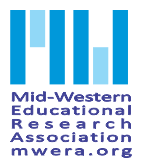Abstract
The United States is an inequitable society growing more inequitable in recent decades, and schooling is both part mechanism of oppression and part pathway toward social justice. Improving the extent to which schooling actually contributes to equity, however, depends on efforts to cultivate educator practices that advance social justice. Defining these practices and measuring their use among school faculties are necessary parts of the improvement process. Unfortunately, adequate measures of collective social justice practice in schools have not been developed for use with teachers. Based on a conception of social just as a three-part structure, we report progress on developing a 22-item instrument to measure collective social justice practice in schools, using data from teachers about their schools (rather than about their own practice). This report explains the rationale and conceptualization of the instrument, argues its intended use and its validity relevant to the intended use, accounts for item development, and presents empirical evidence of the relationship of items to the construct and of the construct to contextual variables. We argue an intended use in the summative evaluation of professional development that aims to foster improvement in collective social justice practice in multiple schools. Empirical work (exploratory factor analysis and correlation) supported the theoretical model and showed that the proposed measure is unrelated to political orientation. Although additional validation studies are certainly necessary more fully to establish validity for the intended use, the considerable work thus far completed on the items should prove helpful to other researchers struggling to measure social justice practice in schools in an historic era of increased concern for equity.
Recommended Citation
Howley, Craig; Howley, Aimee; Dudek, Marged; and Gilday, Courtney
(2021)
"Fairness, Voice, Dialogue: Measuring Collective Social Justice in Schools,"
Mid-Western Educational Researcher: Vol. 33:
Iss.
3, Article 3.
Available at:
https://scholarworks.bgsu.edu/mwer/vol33/iss3/3


